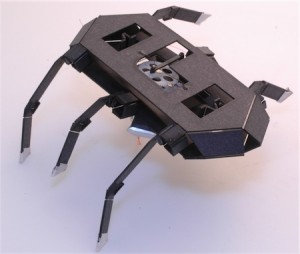Resilient cockroach-inspired robot survives large falls, dashes off

IEEE Spectrum writes of a small resilient robot created by Paul Birkmeyer and Prof. Ronald Fearing at the Biomimetic Millisystems Lab at UC Berkeley.
Aptly called DASH (Dynamic Autonomous Sprawled Hexapod), the six-legged insect-inspired robot can reach speeds of 1.5 meters per second and is flexible/strong enough to be dropped from a height of 28 meters without breaking. A single DC motor powers the legs and a small servomotor to slightly deform the robot's body, allowing it to make turns.
DASH was created using a fabrication process called smart composite microstructures, or SCM. Developed by UC Berkeley researchers, the process is quick, inexpensive, and purpose-built for the design challenges of microrobots.

DASH is but one of several ongoing projects underway at the Biomimetic Millisystems Lab. For instance, check out the synthetic gecko adhesive which cleans itself during use, as the natural gecko does. Or the Micromechanical Flying Insect (MFI) Project, an effort to develop a 25 mm (wingtip-to-wingtip) device capable of sustained autonomous flight.
Among the goals of the researchers is to; "Harness features of animal manipulation, locomotion, sensing, actuation, mechanics, dynamics, and control strategies to radically improve millirobot capabilities."